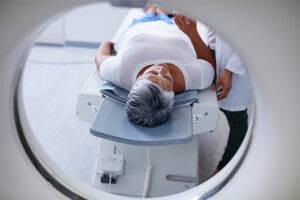Neurology
Migraine
Medication Overuse in People With Migraine
Overview
Acute medication overuse (AMO) is a serious risk for patients suffering from migraine headaches. Our featured expert discusses the overuse of acute migraine medications and offers strategies to help patients avoid AMO.
Expert Commentary
Deborah I. Friedman, MD, MPH, FAAN, FAHS
|
|
“Some patients with migraine who have severe cases of AMO may require several days of hospitalization and treatment with dihydroergotamine while the overused medication is being tapered.”
In the 2018 MAST study, 15.4% of respondents reported having AMO, whereas headache clinics report that 50% to 70% of their patients overuse medication, as noted by Schwedt and colleagues. AMO is associated with medication overuse headache (MOH), which is characterized by headache that develops as a result of the regular overuse of acute headache treatments and occurs on more than 15 days in a 1-month period in those with preexisting primary headache. Patients with MOH initially take their medication only for active headaches, but often eventually proceed to take their medication as a preventive measure in addition to using the same drug to treat repeated headache episodes. This can be a red flag for AMO, and physicians treating patients with migraine should be alert to such signs.
Patients cannot always be relied on to voluntarily divulge their use of additional medications or their use of medications at a frequency that is greater than that prescribed by the physician. Instead, physicians should directly and specifically query their patients on the dosage of and frequency of using both prescription and nonprescription medications to treat their headaches.
The ease or difficulty of eliminating the impacts of AMO are drug dependent. For those taking nonprescription pain relievers such as acetaminophen or nonsteroidal anti-inflammatory drugs, patient counseling and self-motivation are often sufficient to break the cycle of AMO. In some cases, a bridge therapy, such as a course of steroids or a long-acting triptan, can be prescribed to ease the discomfort of withdrawal from acute medications, as patients will feel worse before they get better. The overuse of butalbital, opioids, or triptans can pose significantly greater challenges and may require preventive medication as the patient is weaned off these drugs. Some patients with migraine who have severe cases of AMO may require several days of hospitalization and treatment with dihydroergotamine while the overused medication is being tapered.
The prognosis for patients with MOH is variable. Many patients are able to successfully discontinue their overused medications and use acceptable therapies to control their headaches. However, it may take many months of being off the causative acute medication(s) before the patient improves. Others have a high rate of recidivism, reverting to overusing acute medications in times of stress or crisis. Cognitive behavioral therapy is helpful in such cases. Both the duration and type of overused medication seem to affect prognosis. Early life trauma and stressful events portend a negative short-term outcome after medication withdrawal. Alteration of brain circuits and receptors from the long-term use of opioids may contribute to a lack of improvement following detoxification and, ultimately, a poor outcome.
References
Fischer MA, Jan A. Medication-overuse headache. StatPearls. StatPearls Publishing; 2021.
Marmura MJ, Silberstein SD, Schwedt TJ. The acute treatment of migraine in adults: the American Headache Society evidence assessment of migraine pharmacotherapies. Headache. 2015;55(1):3-20. doi:10.1111/head.12499
Schwedt TJ, Alam A, Reed ML, et al. Factors associated with acute medication overuse in people with migraine: results from the 2017 Migraine in America Symptoms and Treatment (MAST) study. J Headache Pain. 2018;19(1):38. doi:10.1186/s10194-018-0865-z
Silberstein SD. Preventive migraine treatment. Continuum (Minneap Minn). 2015;21(4 headache):973-989. doi:10.1212/CON.0000000000000199
Vandenbussche N, Laterza D, Lisicki M, et al. Medication-overuse headache: a widely recognized entity amidst ongoing debate. J Headache Pain. 2018;19(1):50. doi:10.1186/s10194-018-0875-x
Wakerley BR. Medication-overuse headache. Pract Neurol. 2019;19(5):399-403. doi:10.1136/practneurol-2018-002048











